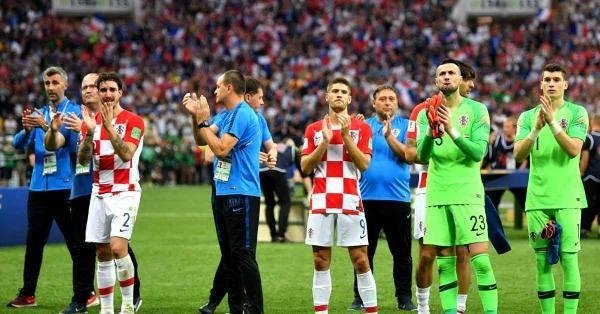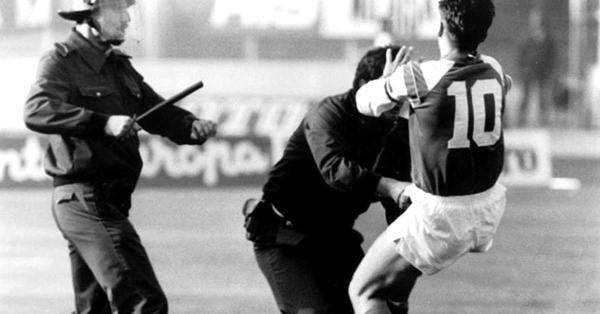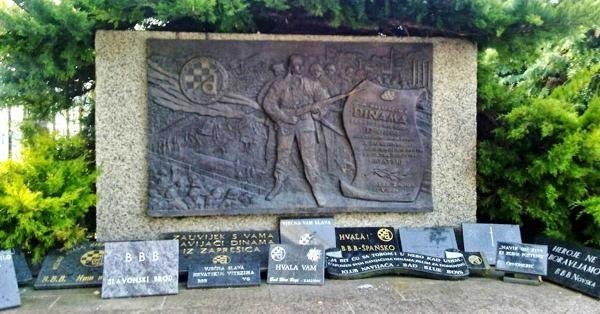
Once the Argentine referee Néstor Pitana sounded the long whistle marks the end of the 2018 World Cup final, Luka Modric immediately limp. The other Croatian players looked resigned when the French players scattered celebrating victory.
Croatian President Kolinda Grabar-Kitarovic, who is present and giving medals, embraces his patriots one by one on the green court while comforting and appreciating them. After all, they deserve to be proud of themselves. Not a thing of dime they can tip top fight.
The new achievement should be revered and emulated because they made it through the achievements of the Croatian national team at the 1998 World Cup which - also halted by France in the semifinals - only became the third champion. The achievement in Russia is also remarkable considering Croatia was not long ago independent. Croatia gained independence on June 25, 1991 and managed to rise from the post-War Independence Crusade against Serbia (1991-1995).
War Supporter Trigger
The Maksimir stadium, home of Dinamo Zagreb, became the first silent witness of a physical conflict between the Croats and Serbs when it became Dinamo Zagreb's counter-Red Star Belgrade in the Yugoslavia Premier League on May 13, 1990. At that time, the tension in the Balkans began to roar. Two weeks earlier, Croatia rolled out legislative elections with the victory of the Croatian Democratic Union Party led by ultranationalist Franjo Tuđman.
The rise of Tuđman brought back the bitter and revenge memories of World War II. "Tuđman aroused the nationalist spirit of the people who had long been asleep. Wear Ustaša icons, the Croatian fascist symbols that collaborate with the Nazis in massacring hundreds of thousands of Serbs, "said Franklin Foer in How Soccer Explains the World: The Unlikely Theory of Globalization.

As a result, old wounds back gaping. The stubborn Serbs defended Yugoslavia's unity with its breaking Communist League, slowly under pressure from the rise of the Croatian right wing. Tuđman who also uses football as his political tool, is fully supported by Bad Blue Boys (BBB) who is a hard-line supporter of Dinamo Zagreb.
"They (BBB) are aware of their identity and are brave enough to express Croatian independence when others are still afraid to say it," explains Croatian activist and filmmaker Sasa Podgorelec, quoted by Alex J. Bellamy in The Formation of Croatian National Identity: A Centuries-old Dream.
The Balkan conflict then arrived at its climax at the Maksimir Stadium, when Dinamo hosted Red Star. Red Star who travel to it escorted approximately 3000 fanatical supporters, Delije. Although some acts of violence have appeared outside the stadium before the fight, the "war" actually took place in the stadium.
When the game progresses, both supporters mock each other and insult. Pounding the stones so pelecut riots later. Foer, who was then researching Serbian gangsters and hooliganism, explained that Delije was forced to take off billboards as a shield from a mass-thrown BBB mass. The riot then spread to the field.

"It was the first time in 50 years, in which Yugoslavia saw its ethnic groups fight openly with each other," Foer continued.
The players were evacuated. The Red Star team was evacuated by helicopter, while Dinamo players were escorted by BBB to the dressing room even though some others, like Zvonimir Boban, were still scattered. Captain Dinamo was then made a hero after trying to protect some members of the BBB beaten the police with kungfu kick launch.
Despite six months' sanctions on bans and legal charges from the Yugoslav Football Parent, Boban has no regrets. "Here I am, the public face ready to sacrifice lives, careers, and everything that makes fame. All because of one idea, one goal: the ideals of Croatia, "said Boban loud, told CNN, January 13, 2011.
The riot caused hundreds of victims with various injuries, ranging from stone throws to wounds by gunfire. The new unrest subsided after police brought in armored vehicles and water cannons.
Less than a year later, Croatia's War of Independence broke out (31 March 1991-12 November 1995) as part of the Yugoslav War. Because of the stalled football activity, the fan base, especially BBB, merged into a paramilitary group that became the core of HV (Croatian Army). "Because the Croatian Army did not have an emblem yet, the soldiers put the Dynamos (club) emblems into their uniforms," Bellamy continued.
They are facing a Serbian army that is also reinforced by the paramilitary group of GGG (Armed Forces Guerrillas) led by Zeljko 'Arkan' Raznatovic who is in fact Delije's father. Arkan's men are members of Delije. The Institute for War and Peace Reporting (IWPR) data said the Croatian War killed about 15,000 people on the Croatian side and more than six thousand on the Serbian side until the end of the war that Croatia won. On 25 June, Croatia or Republika Hrvatska proclaimed independence.
You can read it at source
hi good friend thanks
by. @ adit123
Downvoting a post can decrease pending rewards and make it less visible. Common reasons:
Submit
Congratulations @taministy! You have received a personal award!
Click on the badge to view your Board of Honor.
Do not miss the last post from @steemitboard:
SteemitBoard World Cup Contest - The results, the winners and the prizes
Downvoting a post can decrease pending rewards and make it less visible. Common reasons:
Submit